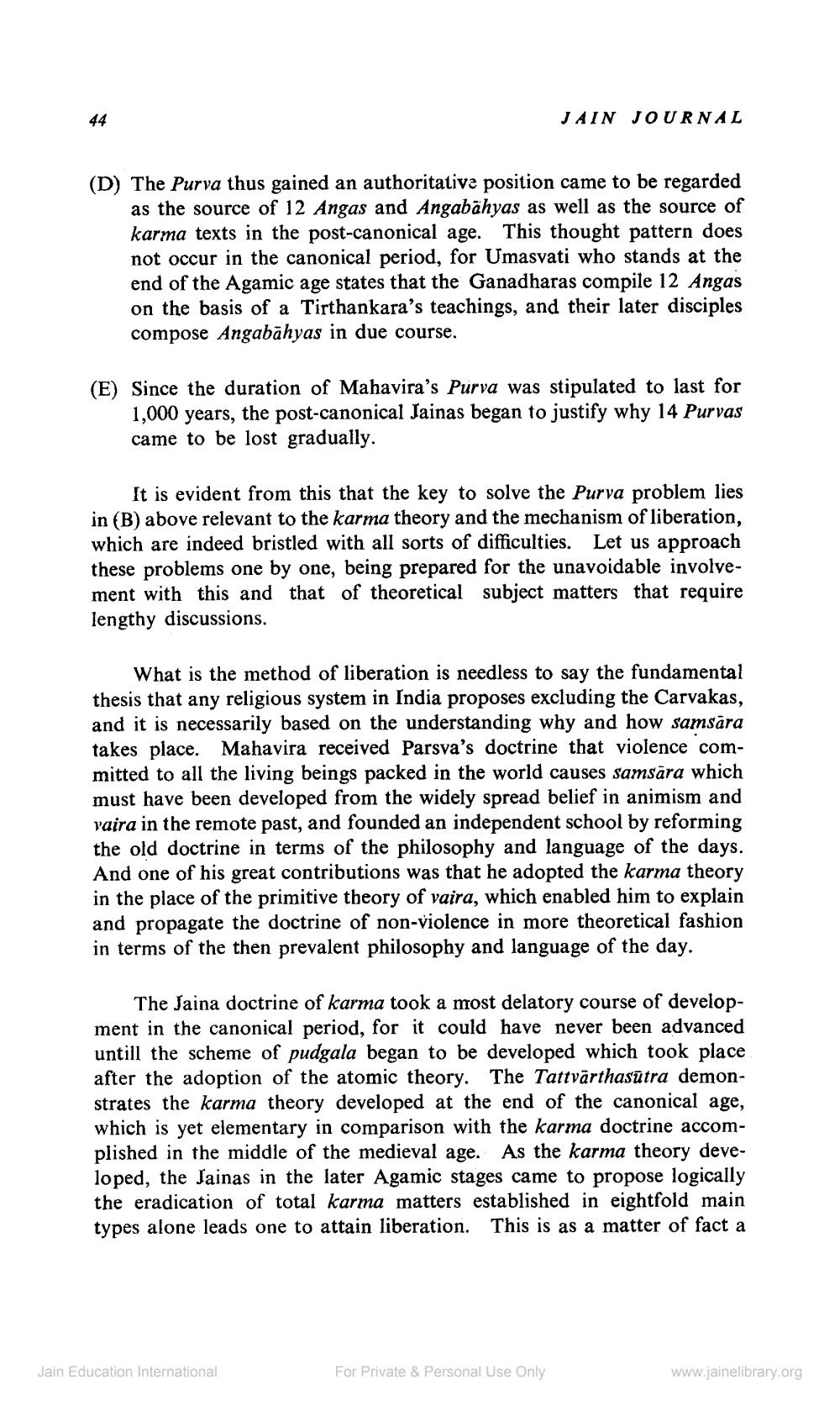Book Title: Jain Journal 1980 10 Author(s): Jain Bhawan Publication Publisher: Jain Bhawan Publication View full book textPage 6
________________ JAIN JOURNAL (D) The Purva thus gained an authoritative position came to be regarded as the source of 12 Angas and Angabāhyas as well as the source of karma texts in the post-canonical age. This thought pattern does not occur in the canonical period, for Umasvati who stands at the end of the Agamic age states that the Ganadharas compile 12 Angas on the basis of a Tirthankara's teachings, and their later disciples compose Angabāhyas in due course. (E) Since the duration of Mahavira's Purva was stipulated to last for 1,000 years, the post-canonical Jainas began to justify why 14 Purvas came to be lost gradually. It is evident from this that the key to solve the Purva problem lies in (B) above relevant to the karma theory and the mechanism of liberation, which are indeed bristled with all sorts of difficulties. Let us approach these problems one by one, being prepared for the unavoidable involvement with this and that of theoretical subject matters that require lengthy discussions. What is the method of liberation is needless to say the fundamental thesis that any religious system in India proposes excluding the Carvakas, and it is necessarily based on the understanding why and how samsara takes place. Mahavira received Parsva's doctrine that violence committed to all the living beings packed in the world causes samsāra which must have been developed from the widely spread belief in animism and vaira in the remote past, and founded an independent school by reforming the old doctrine in terms of the philosophy and language of the days. And one of his great contributions was that he adopted the karma theory in the place of the primitive theory of vaira, which enabled him to explain and propagate the doctrine of non-violence in more theoretical fashion in terms of the then prevalent philosophy and language of the day. The Jaina doctrine of karma took a most delatory course of development in the canonical period, for it could have never been advanced untill the scheme of pudgala began to be developed which took place after the adoption of the atomic theory. The Tattvārthasūtra demonstrates the karma theory developed at the end of the canonical age, which is yet elementary in comparison with the karma doctrine accomplished in the middle of the medieval age. As the karma theory developed, the Jainas in the later Agamic stages came to propose logically the eradication of total karma matters established in eightfold main types alone leads one to attain liberation. This is as a matter of fact a Jain Education International For Private & Personal Use Only www.jainelibrary.orgPage Navigation
1 ... 4 5 6 7 8 9 10 11 12 13 14 15 16 17 18 19 20 21 22 23 24 25 26 27 28 29 30 31 32 33 34 35 36 37 38 39 40 41 42
